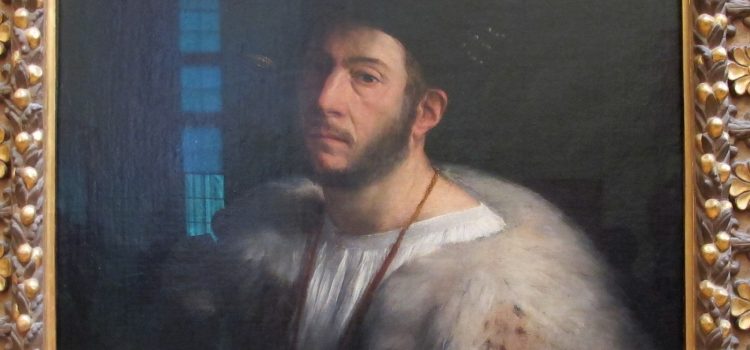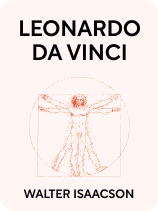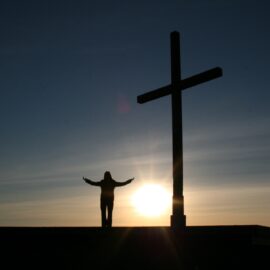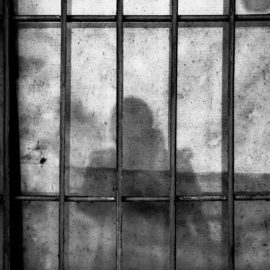

This article is an excerpt from the Shortform book guide to "Leonardo da Vinci" by Walter Isaacson. Shortform has the world's best summaries and analyses of books you should be reading.
Like this article? Sign up for a free trial here.
What was the relationship between Cesare Borgia and Leonardo da Vinci? What did Leonardo learn from Cesare?
When Leonardo da Vinci returned to Florence in 1500, he met Cesare Borgia. In the biography Leonardo da Vinci, Walter Isaacson says Cesare allowed Leonardo to use his engineering skills for the military.
Check out how Cesare Borgia and Leonardo da Vinci met, and how they benefited from each other.
Florence, Again (1500-1506)
Before getting into Cesare Borgia and Leonardo da Vinci’s relationship, let’s look at the events leading up to their first meeting. Leonardo returned to a different Florence from the one he had known. The city had gone through a conservative period and lost the vibrancy of its culture and economy. However, the Florentines were closing that chapter and returning to their roots. Isaacson argues that, at first, Leonardo fit well into this cultural context. He symbolized what Florence was striving to return to, and he played the part of a stylish eccentric.
(Shortform note: The cultural changes in Florence were the result of Girolamo Savonarola, a friar who preached against corruption in the government and church. When the King of France invaded Florence in 1494, Savonarola negotiated on behalf of Florence and became the leader of the city-state. He purged the Florentine government, openly criticized the Pope and the Church, and organized the “burning of the vanities,” where people burned their books, jewelry, and any other object that enticed them to sin. Eventually, political enemies (including the Pope) succeeded in removing Savonarola from leadership and he was killed in 1498.)
Leonardo’s Workshop
In Florence, Leonardo opened a workshop where he fostered a collaborative approach. Leonardo would paint an original version of a work and teach his assistants to produce copies. Isaacson explains that, often, those copies were being produced at the same time as the original, so Leonardo used them to test out different ideas, resulting in different versions of the same paintings. Also, he didn’t sign his paintings, since they were a product of the workshop rather than a product of Leonardo. This collaborative process led to some paintings being difficult to label as authentic Leonardos.
(Shortform note: This setup corresponded with the organization of most artists’ workshops in Renaissance Italy. It allowed the workshop’s master to produce works of art for all kinds of patrons, whether they were as rich as a duke or not. It also allowed for experimentation without losing the workshop’s signature style which differentiated it from the competition.)
A New Patron: Cesare Borgia
In 1502, around the age of 50, Leonardo worked for his most ruthless boss yet: Cesare Borgia. Cesare was on a military campaign to subdue several city-states and bring them under the power of the Pope (his father). During that campaign, Isaacson believes that Florence offered Leonardo’s services as part of a diplomatic package to ensure that Cesare wouldn’t invade the city. This placement gave Leonardo the opportunity to live out his military engineering dreams. Isaacson reports that, during this time, Leonardo:
- Offered advice on how to make fortresses stronger
- Designed ways to fortify dikes and connect harbors to the sea
- Built a self-supporting bridge
- Drew innovative aerial maps using an odometer he had designed
(Shortform note: Cesare Borgia was synonymous with treachery and violence throughout Italy. Knowing that he had more enemies than allies, and that even his alliances were shaky, he hired Leonardo to help protect his territories. In The Prince, Niccolò Machiavelli cites Cesare Borgia as an example of how fortune can make or break a leader. As the son of a pope, he had enormous success establishing his own state in central Italy. But soon after his father died, his state crumbled. He failed to either foresee the danger or adapt to the times, and all his cunning and brutality couldn’t protect him from being overthrown. Machiavelli argues that if Cesare had better prepared for the inevitability of his father’s death, he might have held onto power longer.)

———End of Preview———
Like what you just read? Read the rest of the world's best book summary and analysis of Walter Isaacson's "Leonardo da Vinci" at Shortform.
Here's what you'll find in our full Leonardo da Vinci summary:
- A detailed look into the life, accomplishments, and struggles of Leonardo da Vinci
- Lessons from his life and work that you can apply to your own life
- What set Leonardo apart from other artists at the time






